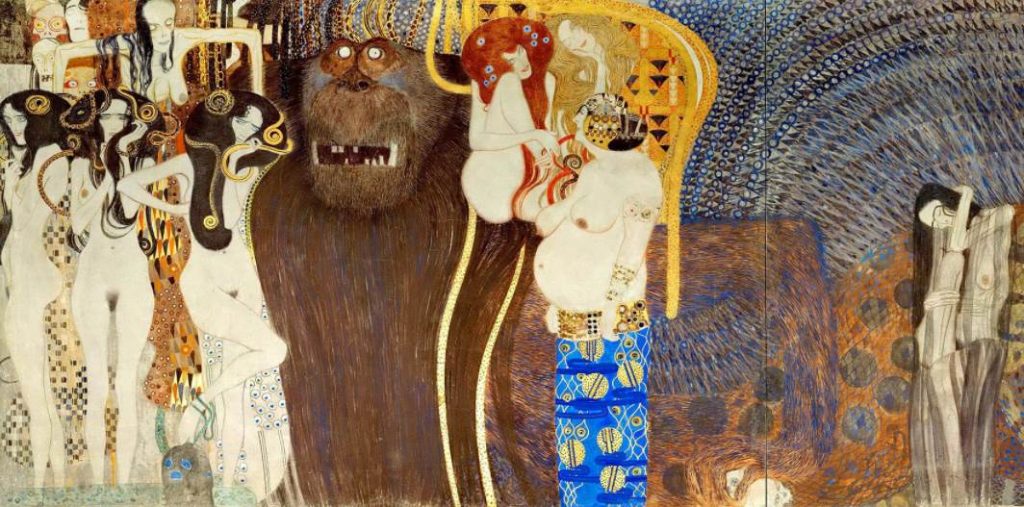One of the greatest artists in Austrian history made a rather drastic career switch in the late 19th century.
Gustav Klimt (1862-1918) was one of the most prominent members of the Vienna Secession movement which was related to the ideals of the Art Nouveau artists.
He initially started as an academic painter who admired the works of Hans Makart (1840-1884), the leading history painter at the time. Together with his brother and a friend they were hired to decorate the most famous buildings in Vienna, including the Kunsthistorisches Museum.
He received the Golden Order of Merit from Austrian Emperor Franz Josef I in 1888. Everything changed when his brother Ernst died in 1892 and he adopted a more personal style of painting.
In this article, we’ll take a closer look at the most famous Gustav Klimt paintings.
1. The Kiss
- Date created: 1907-1908
- Dimensions: 180 × 180 centimeters (71 × 71 inches)
- Location: Österreichische Galerie Belvedere, Vienna, Austria
The Kiss is without a doubt the most famous of all Gustav Klimt paintings. It’s the main work that he created during his so-called “Gold Period” in which he used gold leaf to put the final touches on his paintings.
The original title of the work was “Liebespaar” (the lovers) and some art historians believe that the depicted couple is Klimt himself together with his girlfriend Emilie Flöge. There is no proof of this theory and it may feature one of his models referred to as “Red Hilda.”
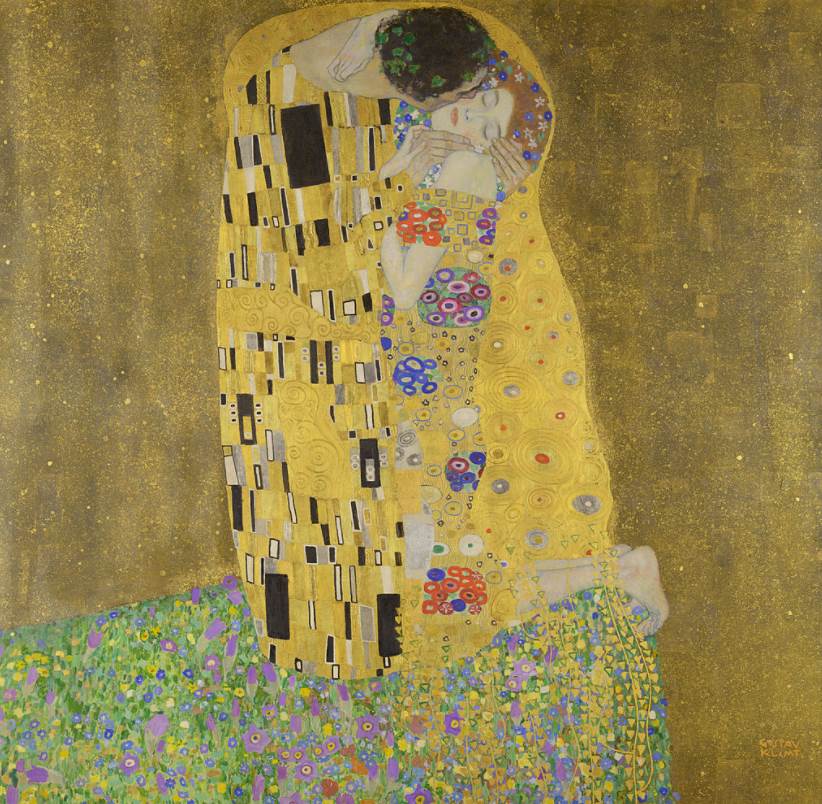
2. Judith and the Head of Holofernes
- Date created: 1901
- Dimensions: 84 × 42 centimeters (33 × 17 inches)
- Location: Österreichische Galerie Belvedere, Vienna, Austria
Judith and the Head of Holofernes is a painting also referred to as “Judith I.” That’s because he completed a work called “Judith II” in 1909. The painting depicts the Biblical figure, Judith, after she has beheaded Holofernes, an invading Assyrian general.
Judith has been a popular figure in the world of art ever since the Renaissance and was depicted by numerous great masters. Klimt refrained from using the gore that was included by arguably the best-known depiction of this woman by Caravaggio.
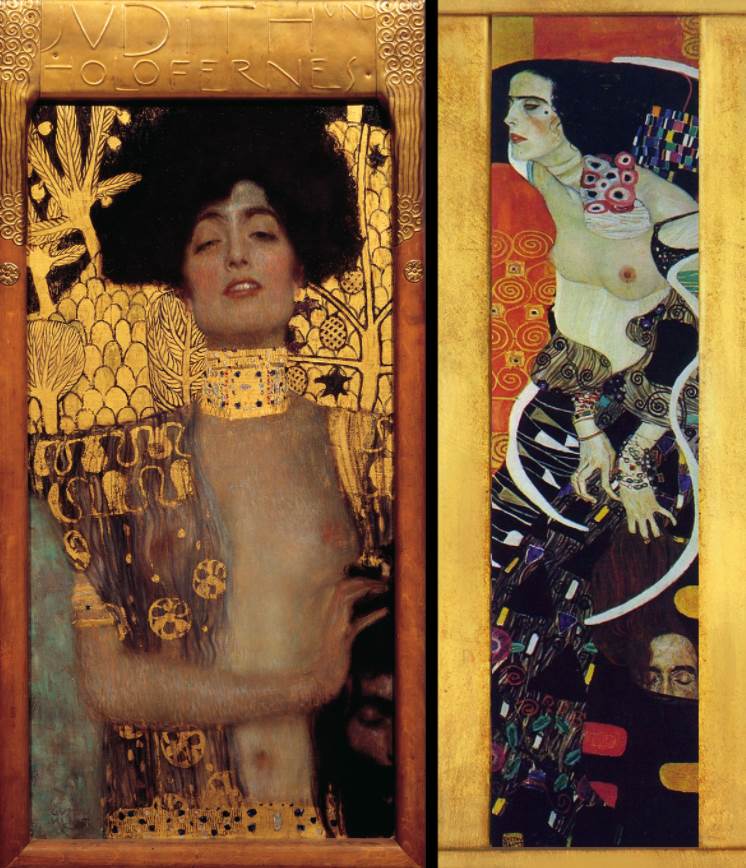
3. Idylle
- Date created: 1884
- Dimensions: 49.5 x 73.5 centimeters (19.4 x 28.93 inches)
- Location: Vienna Museum, Vienna, Austria
Idylle is one of the earlier paintings of Gustav Klimt produced in the 1880s, a period in which he was painting in the traditional academic style influenced by Neoclassical artists. Together with his brother and a friend he had set up a company called “Company of Artists.”
The 1880s were a very busy period in Klimt’s life because many new buildings were constructed in Vienna along the newly constructed Ring road which replaced the fortified city walls. Idylle is one of the many works commissioned to decorate one of these structures.
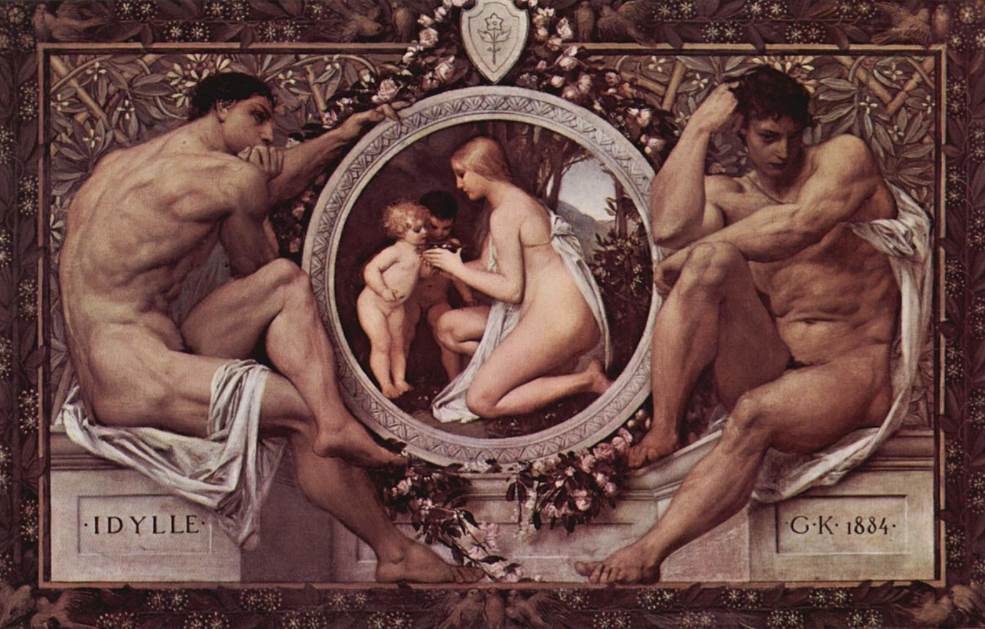
4. Portrait of Adele Bloch-Bauer I
- Date created: 1907
- Dimensions: 140 × 140 centimeters (55.12 × 55.12 inches)
- Location: Neue Galerie, New York City, United States
Portrait of Adele Bloch-Bauer I is also known as “The Lady in Gold” and si another famous Gustav Klimt painting produced during his Golden period. It depicts Adele Bloch-Bauer, a Viennese socialite and the wife of Ferdinand Bloch-Bauer, a rich Jewish banker.
The painting ended up at the Galerie of the Belvedere Palace in Vienna after being stolen by the Nazis during World War II. One of Ferdinand’s nieces named Maria Altmann successfully reclaimed the painting after an extensive legal battle and sold the painting for $135 million in New York City, a record price for a painting in the early 21st century.
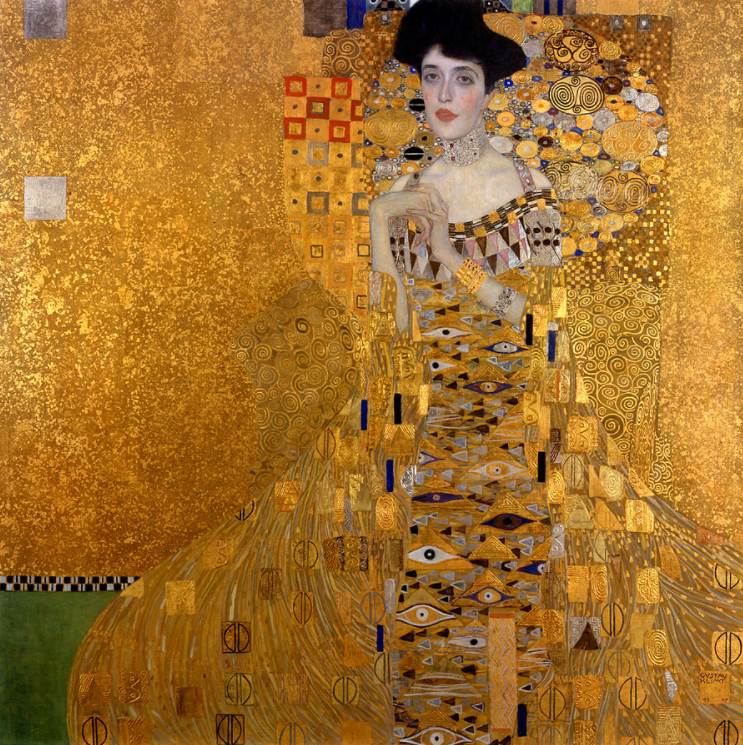
5. The Three Ages of Woman
- Date created: 1905
- Dimensions: 180 × 180 centimeters (71 × 71 inches)
- Location: Galleria Nazionale d’Arte Moderna, Rome, Italy
The Three Ages of Woman was initially referred to as “Die Drei Lebensalter” or “The Three Ages.” As the name of the painting suggest, it depicts 3 women in the various stages of their life in the typical Vienna Secession style that Gustav Kmit helped to develop.
The painting was first exhibited at the second exhibition of the Deutsche Künstlerbund, shortly after it was completed in 1905. It eventually made its way to Italy and can be admired at the Museum of Modern Art in Rome, Italy.
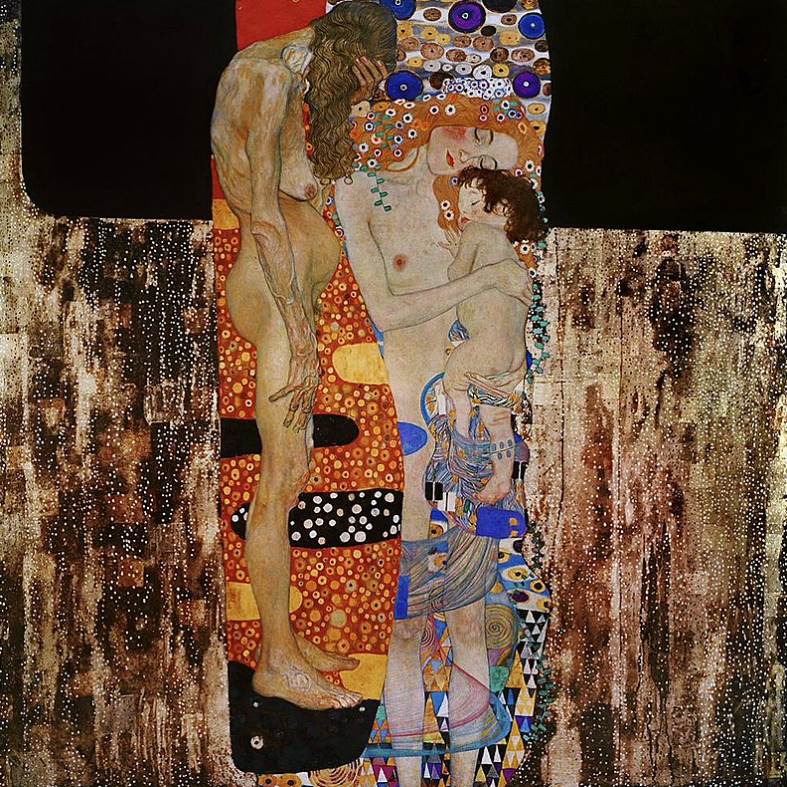
6. Hope II
- Date created: 1907-1908
- Dimensions: 110.5 x 110.5 centimeters (43.5 × 43.5 inches)
- Location: Museum of Modern Art, New York City, United States
Hope II or “Die Hoffnung II” is the second version of 2 paintings that depict a pregnant woman. The first version was originally simply referred to as “Hope” but has been named Hope I to distinguish both Gustav Klimt paintings.
The painting depicts a woman named Herma who was one of the favorite models of the artist. While the first version depicts the woman completely naked, the second version depicts the woman with bare breasts as she bows her head down. A skull can be distinguished which might be a reference to the dangers of giving birth.
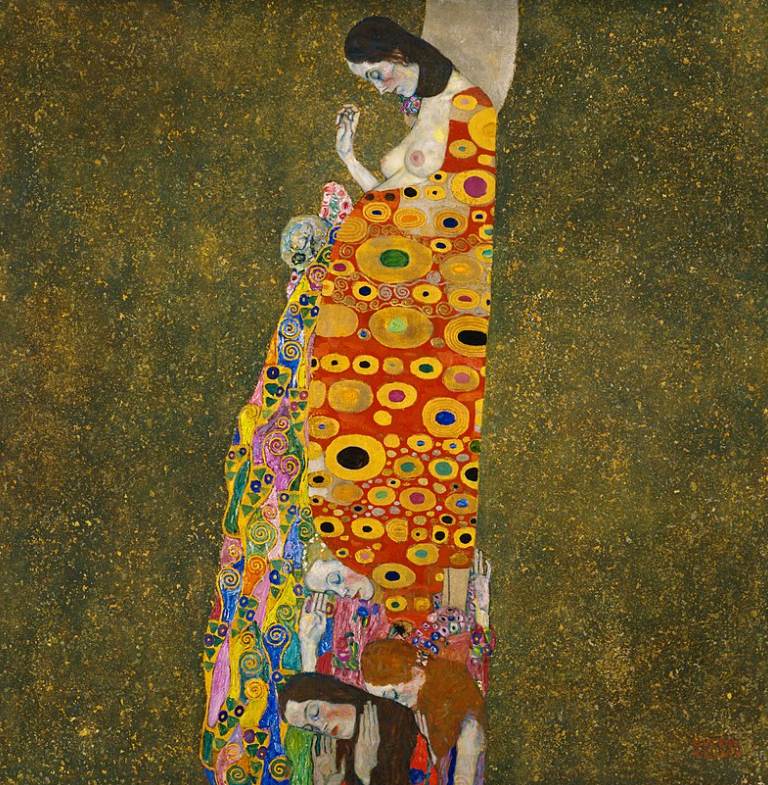
7. The Maiden
- Date created: 1913
- Dimensions: 190 × 200 centimeters (74.8 x 78.74 inches)
- Location: National Gallery, Prague, Czech Republic
The Maiden or “Die Jungfrau” is a painting that features a large number of flowers and a total of seven women intertwined with each other. These are symbols of the transition that girls make when they become women.
The seven women are each into a particular stage of womanhood. The composition of the painting depicts the women as if they are inside a womb, the ultimate symbol of the transition into various stages of life.
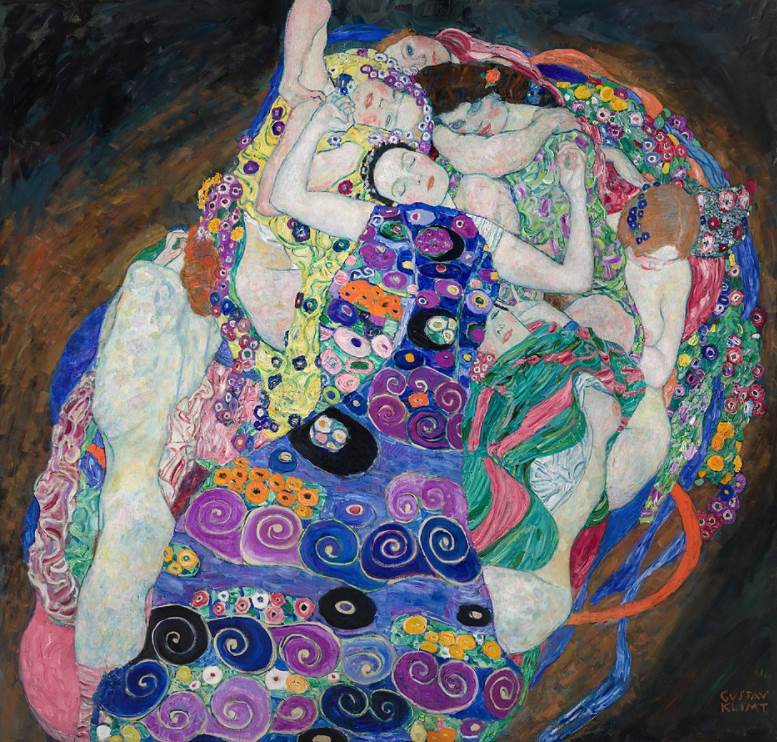
8. The Tree of Life, Stocklet Frieze
- Date created: 1909
- Dimensions: 195 x 102 centimeters (77 x 40 inches)
- Location: Museum of Applied Arts, Vienna, Austria
The Tree of Life is part of the Stoclet Frieze, a series of 3 mosaics that decorate the Palais Stocklet in Brussels Belgium. This opulent Art Nouveau building was constructed between 1905 and 1911 for rich Begian finance Adolphe Stocklet (1871-1949).
Klimt earned the commission and decorated the interior of the building with 3 paintings that depict Trees of Life, a standing female figure, and an embracing couple. These are located on the walls of the dining room and the Tree of Life is considered to be one of the most iconic of all Gustav Klimt paintings.
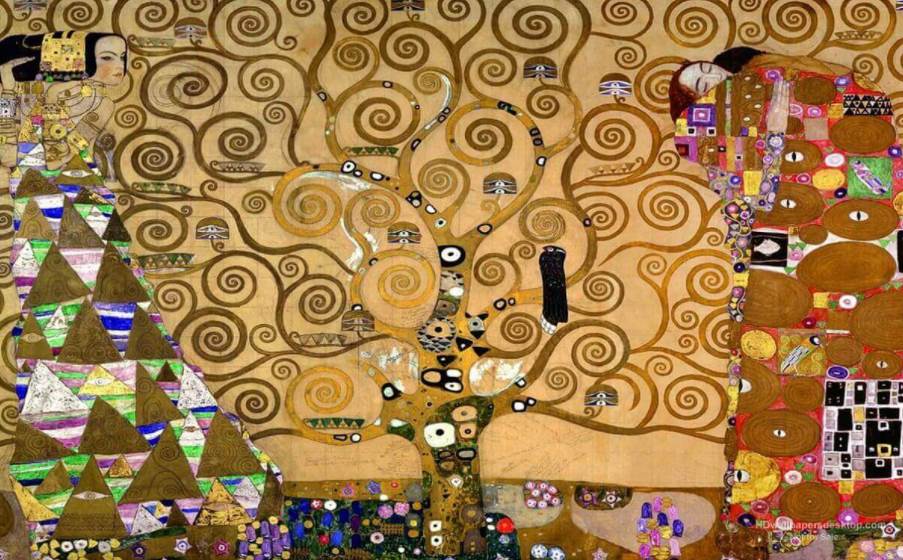
9. Death and Life
- Date created: 1908-1915
- Dimensions: 180.5 × 200.5 centimeters (71.1 x 78.9 inches)
- Location: Leopold Museum, Vienna, Austria
Death and Life is a painting that took Gustav Klimt 7 years to complete between 1908 and 1915. This makes it quite remarkable that the painting won the first prize at the World Exhibition in Rome in 1911, one of the highlights of Klimt’s career.
The painting depicts the various stages of life on the right along with a symbolic depiction of death on the left. The painting originally featured a gold background but the artist changed this to a gloomy grey background in 1915, just 3 years before he passed away himself because of the Spanish flu epidemic.
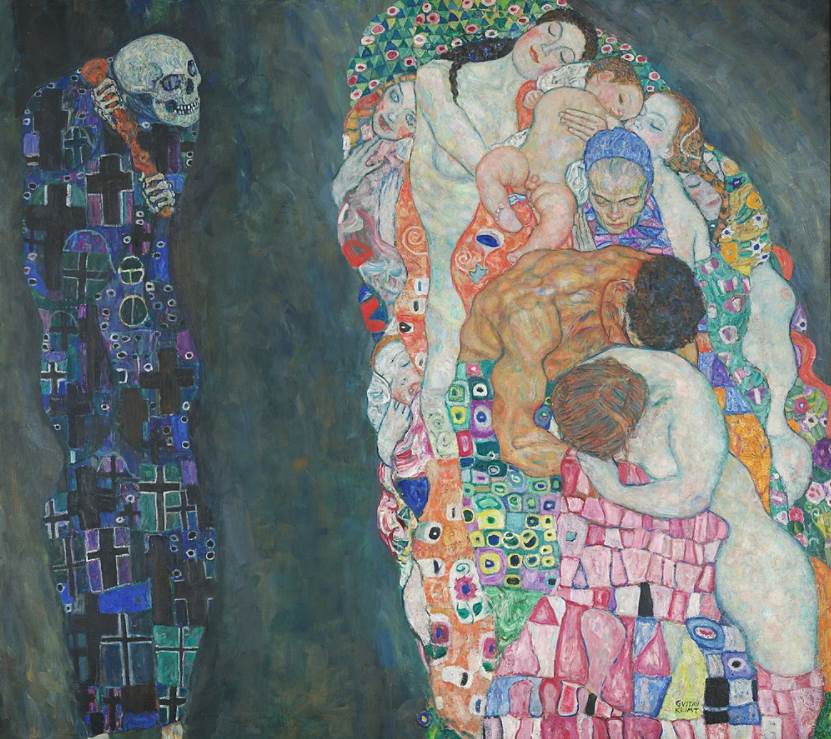
10. Beethoven Frieze
- Date created: 1901-1902
- Dimensions: 2.15 x 34 meters (7.05 x 111.54 feet)
- Location: Secession Building, Vienna, Austria
The Beethoven Frieze is the most remarkable work of art inside the Secession Building in Vienna. This building was constructed in 1898 and was intended to be the architectural manifestation of the Vienna Secession movement which had recently emerged at the time.
As you surely expected, this building is used as an art gallery and features the most iconic work of the Vienna Secession movement called the “Beethoven Frieze.” This immense work of art was moved into a climate-controlled room and is on permanent display inside the building.
